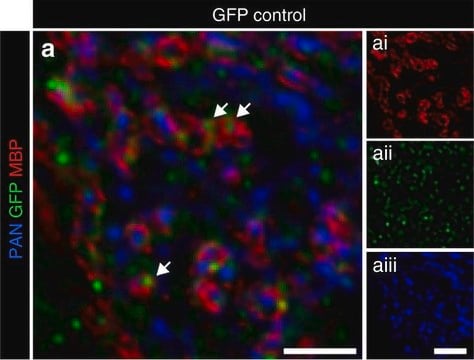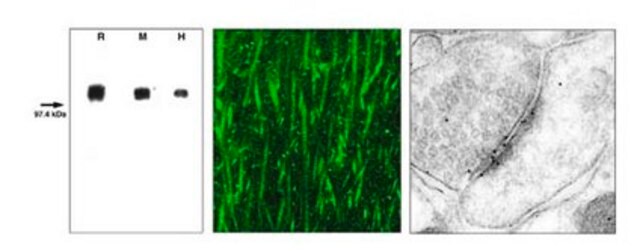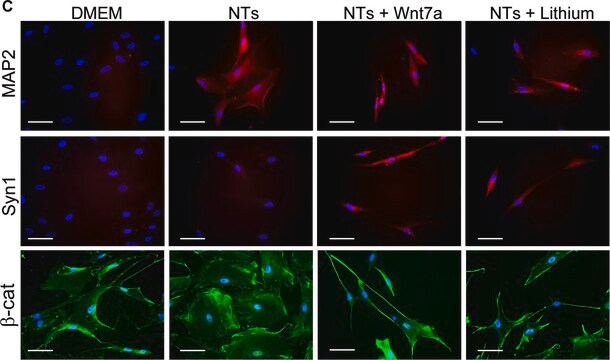AB5382
Anti-Nitric Oxide Synthase II Antibody
serum, Chemicon®
Sinónimos:
NOS II, iNOS
About This Item
Productos recomendados
biological source
rabbit
Quality Level
antibody form
serum
antibody product type
primary antibodies
clone
polyclonal
species reactivity
mouse, rat
manufacturer/tradename
Chemicon®
technique(s)
immunocytochemistry: suitable
immunohistochemistry: suitable
western blot: suitable
NCBI accession no.
UniProt accession no.
shipped in
dry ice
target post-translational modification
unmodified
Gene Information
mouse ... Nos2(18126)
rat ... Nos2(24599)
General description
Specificity
Immunogen
Application
1:5000 (ABC) dilution of a previous lot was used on tissue sections (rat liver).
Immunocytochemistry:
1:50,000 dilution of a previous lot was used on cultured cells.
Western blot:
1:5,000 (ECL). The antibody has been used successfully on rat liver. It is not recommended for use on rat brain extracts since unidentified bands may be present.
Optimal working dilutions must be determined by end user.
Neuroscience
Oxidative Stress
Quality
Western Blot Analysis:
1:1000 dilution of this antibody detected INOS on 10 µg of Mouse liver lysates.
Target description
Physical form
Storage and Stability
Handling Recommendations: Upon first thaw, and prior to removing the cap, centrifuge the vial and gently mix the solution. Aliquot into microcentrifuge tubes and store at -20°C. Avoid repeated freeze/thaw cycles, which may damage IgG and affect product performance.
Analysis Note
Macrophages, liver lysates
Other Notes
Legal Information
Disclaimer
Not finding the right product?
Try our Herramienta de selección de productos.
Storage Class
10 - Combustible liquids
wgk_germany
WGK 1
Certificados de análisis (COA)
Busque Certificados de análisis (COA) introduciendo el número de lote del producto. Los números de lote se encuentran en la etiqueta del producto después de las palabras «Lot» o «Batch»
¿Ya tiene este producto?
Encuentre la documentación para los productos que ha comprado recientemente en la Biblioteca de documentos.
Artículos
The term neurodegeneration characterizes a chronic loss of neuronal structure and function leading to progressive mental impairments.
Nuestro equipo de científicos tiene experiencia en todas las áreas de investigación: Ciencias de la vida, Ciencia de los materiales, Síntesis química, Cromatografía, Analítica y muchas otras.
Póngase en contacto con el Servicio técnico








